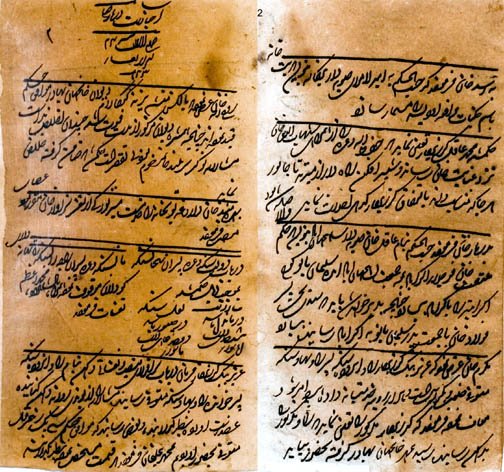Aurangzeb’s letter, written in Persian to demolish Srimandir
Srimandir, one of the main attractions for tourists and celebrities, has been the soul of every Odia since it was constructed in the 12th Century. While a visit to Odisha is always considered incomplete without the darshan of the Trinity of Srimandir, the stories in the past was different. The temple was attacked on multiple occasions, mostly by Muslim rulers, to plunder its treasures. Though, the assault on the Jagannath temple by Kalapahada, who is said to have set the idols on fire on the banks of the Ganga, has to rank as one of the most dreaded and talked-about events in history, there were occasions including once under the rule of a Mughal emperor Aurangzeb when attempts were made to demolish Srimandir, the pride of Odisha.
In terms of religious bigotry, Aurangzeb had descended to his lowest point by 1681. He issued a direction to Amir-ul-Umra, the Subedar in the Bengal province, to destroy the Jagannath temple.
The officials travelled to Puri to demolish the temple after receiving the order. Even though Odisha was ruled by the Mughals, the shrine was nonetheless guarded by the Gajapati, or King of Khurdha, who lived there. As people heard this news, there was an atmosphere of fear, rage, and desperation. But nobody could do anything. Eventually, a strategy was worked out. An agreement was reached with the Subedar. A sizable sum of money was offered to him as bribe. However, he was aware of the repercussions of disobeying Aurangzeb’s decree.
But because of the size of the payment and Odias’ passionate approach in convincing him with the offer, he ultimately decided to take a chance and persuaded Aurangzeb that his command had been carried out.
Tricking Aurangzeb
A replica of Lord Jagannath was made and taken to Aurangzeb’s court in Delhi in an effort to deceive him. The temple was permanently shut down. The rituals were all stopped. The Rath Yatra was put on hold indefinitely. A story was circulated that the temple and the idols had been destroyed. By doing all of this, a situation was created where Aurangzeb felt his commands had been followed.
Marathas’ indirect role
At that time, Aurangzeb was dealing with a major challenge brought on by the Marathas in the south. He had to travel to Deccan in order to put an end to the uprising. Sikhs, Jats, and other groups were often stirring up strife. Therefore, Aurangzeb was unable to focus on such issues.
Thus, the pride of Odias, the Jagannath temple, was saved from the wrath of iconoclasts thanks to the Marathas and other parties. After Aurangzeb’s death, the temple was finally reopened in 1707, and the Rath Yatra was resumed.
The most important aspect of the history of assault on the enormous temple of Lord Jagannath in Puri is that the idols’ ‘Brahma,’ which has persisted to this day, was never destroyed.
Bijay Mandal, OP
